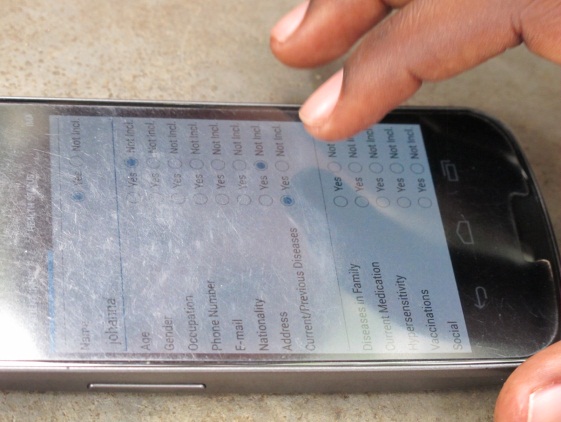Transforming poverty reduction through innovation
The Innovations Against Poverty, run as a pilot challenge fund by the Swedish International Development Cooperation Agency (Sida), is a clear example of how Sida uses innovative financial mechanisms and partnership with the private sector as a force for change. By the end of December 2013, more than 60 entrepreneurs were funded in 26 countries in a wide variety of sectors. Today from Stockholm as we review the pilot, it is important to look back and talk about how failure and learning can be essential to innovation.
At Sida we believe that by collaborating and sharing failures and lessons learned, we can become even better at addressing poverty reduction. In the spirit of knowledge sharing, we have identified five failures, which will help us lead to improvements and further innovations.
1: No Support for Early Stage Entrepreneurs
You could argue that the birth of Innovations Against Poverty pilot (IAP) came from a failure on the part of the entrepreneurial ecosystem. As early as 2010, we realized that inclusive businesses offered solutions to poverty that do not rely on subsidy, but rather on business drivers that can take solutions to scale. But at the same time, there were a number of challenges faced by entrepreneurs such as high set-up costs, risks and uncertainty, long time to pay back, concept not proven and lack of finance. These failures and barriers in the ecosystem inspired us to found the Innovations Against Poverty fund. The aim of the IAP is to support entrepreneurs to overcome some of those barriers by sharing risk early on in the innovation cycle.
2: Risky Business

Innovation is risky. Innovation crosses multiple dimensions in order to pioneer new business models serving the Base of the Pyramid (BoP) is especially risky. In the emerging field of inclusive business, there are still many more unproven models than there are proven ones, so the vast majority of investment opportunities are at the early stage. Building and scaling new business models takes time, some research suggests that new inclusive firms take more than a decade to achieve a reasonable level of scale. This was our failure, although we recognized the importance of early stage investments, as donors we wanted quick results for the money. But it takes time. We have learned to accept even more risks and very long timeframes before there is significant reach into the BoP and/or commercial viability is achieved.
3: Underestimating the Importance of an Entrepreneurial Mindset
Which brings us to the third failure: mindset. Looking back, our traditional approach as donor to monitor and evaluate development results was not feasible; it needed to be adapted both to become manageable for the grantees and to truly capture the inclusive businesses’ results over time.
If there is one consistent lesson from the experience of IAP grantees to date, it’s that things seldom go to plan. When asked what advice IAP-supported entrepreneurs would give to others, the almost universal response is “Don’t give up”. Faced with so many challenges, changes, delays and setbacks, it’s easy to see why.
As such, along the way, we’ve had to develop an entrepreneurial mindset, which requires patience, persistence and resilience. If we hadn’t experienced resistance from the get-go in the way we work, we would most likely never have been able to support successful entrepreneurs who have tested, failed and grown. We have learned that by releasing the creativity of small innovative entrepreneurs it is likely to generate solutions that would not have been born in a more traditional donor setting, but it required us, as donors, to relinquish a degree of control and become much more flexible in our procedures and decision-making processes. Ultimately, this meant becoming a little bit more innovative and entrepreneurial in the way we work and think.
4: The People Factor
When we first launched the IAP, we had identified that advisory support was an important component of the fund. The advisory support was foreseen to be provided both as part of the initial marketing of the fund and throughout the various work processes (application, assessment, contracting and monitoring), but a limited set of hours were envisioned per project.

We soon realized that this was not enough. Support needed to be provided through advice and guidance on developing and implementing inclusive business models that combine good commercial returns with opportunities for the poor to benefit.
During an exchange seminar that IAP arranged in September 2013 with incubators and other supporting organizations of social enterprises, it was agreed that the most common critical gaps in inclusive business start-ups are business planning skills, financial literacy, and attracting top talent. Incubator organizations are helping entrepreneurs by providing advice, training and mentoring in these areas. IAP has since provided technical support to IAP grantees through the IAP team and Challenges Worldwide and this has been welcomed and been reportedly valuable.
From the IAP experience, we have learned that coupling financing and tailored capacity building/technical assistance is crucial for early stage entrepreneurs and it is key to bring innovations to market.
A failure is often an innovation in disguise. You don’t go from thinking about space travel to building a rocket ship in one day. You begin with small steps, mess things up, burn your fingers, learn and tinker until find you’ve succeeded.
It is for this reason that based on failures and learnings we are working at redesigning the IAP fund, and it is expected that new calls for proposals will be out during 2015. Watch this space and our website: www.sida.se for more updated information.
More detailed lessons from the IAP pilot may be found in the 2014 Knowledge Exchange Report From Paper to Practice.